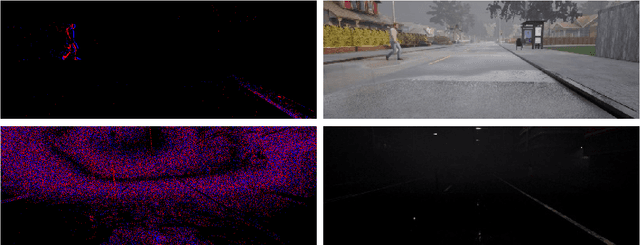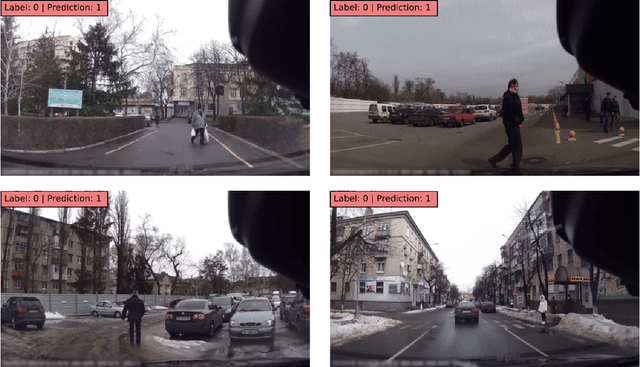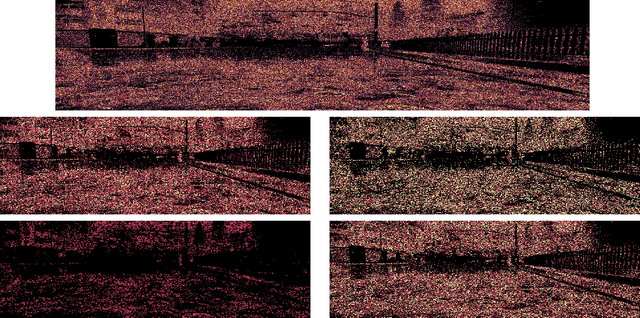Szymon Mazurek
Three-Factor Learning in Spiking Neural Networks: An Overview of Methods and Trends from a Machine Learning Perspective
Apr 06, 2025Abstract:Three-factor learning rules in Spiking Neural Networks (SNNs) have emerged as a crucial extension to traditional Hebbian learning and Spike-Timing-Dependent Plasticity (STDP), incorporating neuromodulatory signals to improve adaptation and learning efficiency. These mechanisms enhance biological plausibility and facilitate improved credit assignment in artificial neural systems. This paper takes a view on this topic from a machine learning perspective, providing an overview of recent advances in three-factor learning, discusses theoretical foundations, algorithmic implementations, and their relevance to reinforcement learning and neuromorphic computing. In addition, we explore interdisciplinary approaches, scalability challenges, and potential applications in robotics, cognitive modeling, and AI systems. Finally, we highlight key research gaps and propose future directions for bridging the gap between neuroscience and artificial intelligence.
How to Connect Speech Foundation Models and Large Language Models? What Matters and What Does Not
Sep 25, 2024



Abstract:The remarkable performance achieved by Large Language Models (LLM) has driven research efforts to leverage them for a wide range of tasks and input modalities. In speech-to-text (S2T) tasks, the emerging solution consists of projecting the output of the encoder of a Speech Foundational Model (SFM) into the LLM embedding space through an adapter module. However, no work has yet investigated how much the downstream-task performance depends on each component (SFM, adapter, LLM) nor whether the best design of the adapter depends on the chosen SFM and LLM. To fill this gap, we evaluate the combination of 5 adapter modules, 2 LLMs (Mistral and Llama), and 2 SFMs (Whisper and SeamlessM4T) on two widespread S2T tasks, namely Automatic Speech Recognition and Speech Translation. Our results demonstrate that the SFM plays a pivotal role in downstream performance, while the adapter choice has moderate impact and depends on the SFM and LLM.
Pedestrian intention prediction in Adverse Weather Conditions with Spiking Neural Networks and Dynamic Vision Sensors
Jun 01, 2024



Abstract:This study examines the effectiveness of Spiking Neural Networks (SNNs) paired with Dynamic Vision Sensors (DVS) to improve pedestrian detection in adverse weather, a significant challenge for autonomous vehicles. Utilizing the high temporal resolution and low latency of DVS, which excels in dynamic, low-light, and high-contrast environments, we assess the efficiency of SNNs compared to traditional Convolutional Neural Networks (CNNs). Our experiments involved testing across diverse weather scenarios using a custom dataset from the CARLA simulator, mirroring real-world variability. SNN models, enhanced with Temporally Effective Batch Normalization, were trained and benchmarked against state-of-the-art CNNs to demonstrate superior accuracy and computational efficiency in complex conditions such as rain and fog. The results indicate that SNNs, integrated with DVS, significantly reduce computational overhead and improve detection accuracy in challenging conditions compared to CNNs. This highlights the potential of DVS combined with bio-inspired SNN processing to enhance autonomous vehicle perception and decision-making systems, advancing intelligent transportation systems' safety features in varying operational environments. Additionally, our research indicates that SNNs perform more efficiently in handling long perception windows and prediction tasks, rather than simple pedestrian detection.
Computer-Aided Cytology Diagnosis in Animals: CNN-Based Image Quality Assessment for Accurate Disease Classification
Aug 11, 2023Abstract:This paper presents a computer-aided cytology diagnosis system designed for animals, focusing on image quality assessment (IQA) using Convolutional Neural Networks (CNNs). The system's building blocks are tailored to seamlessly integrate IQA, ensuring reliable performance in disease classification. We extensively investigate the CNN's ability to handle various image variations and scenarios, analyzing the impact on detecting low-quality input data. Additionally, the network's capacity to differentiate valid cellular samples from those with artifacts is evaluated. Our study employs a ResNet18 network architecture and explores the effects of input sizes and cropping strategies on model performance. The research sheds light on the significance of CNN-based IQA in computer-aided cytology diagnosis for animals, enhancing the accuracy of disease classification.
Using simulation to calibrate real data acquisition in veterinary medicine
Jul 21, 2023Abstract:This paper explores the innovative use of simulation environments to enhance data acquisition and diagnostics in veterinary medicine, focusing specifically on gait analysis in dogs. The study harnesses the power of Blender and the Blenderproc library to generate synthetic datasets that reflect diverse anatomical, environmental, and behavioral conditions. The generated data, represented in graph form and standardized for optimal analysis, is utilized to train machine learning algorithms for identifying normal and abnormal gaits. Two distinct datasets with varying degrees of camera angle granularity are created to further investigate the influence of camera perspective on model accuracy. Preliminary results suggest that this simulation-based approach holds promise for advancing veterinary diagnostics by enabling more precise data acquisition and more effective machine learning models. By integrating synthetic and real-world patient data, the study lays a robust foundation for improving overall effectiveness and efficiency in veterinary medicine.
Assessing Dataset Quality Through Decision Tree Characteristics in Autoencoder-Processed Spaces
Jun 27, 2023



Abstract:In this paper, we delve into the critical aspect of dataset quality assessment in machine learning classification tasks. Leveraging a variety of nine distinct datasets, each crafted for classification tasks with varying complexity levels, we illustrate the profound impact of dataset quality on model training and performance. We further introduce two additional datasets designed to represent specific data conditions - one maximizing entropy and the other demonstrating high redundancy. Our findings underscore the importance of appropriate feature selection, adequate data volume, and data quality in achieving high-performing machine learning models. To aid researchers and practitioners, we propose a comprehensive framework for dataset quality assessment, which can help evaluate if the dataset at hand is sufficient and of the required quality for specific tasks. This research offers valuable insights into data assessment practices, contributing to the development of more accurate and robust machine learning models.
Using super-resolution for enhancing visual perception and segmentation performance in veterinary cytology
Jun 20, 2023Abstract:The primary objective of this research was to enhance the quality of semantic segmentation in cytology images by incorporating super-resolution (SR) architectures. An additional contribution was the development of a novel dataset aimed at improving imaging quality in the presence of inaccurate focus. Our experimental results demonstrate that the integration of SR techniques into the segmentation pipeline can lead to a significant improvement of up to 25% in the mean average precision (mAP) segmentation metric. These findings suggest that leveraging SR architectures holds great promise for advancing the state of the art in cytology image analysis.
Segmentation of the veterinary cytological images for fast neoplastic tumors diagnosis
May 07, 2023



Abstract:This paper shows the machine learning system which performs instance segmentation of cytological images in veterinary medicine. Eleven cell types were used directly and indirectly in the experiments, including damaged and unrecognized categories. The deep learning models employed in the system achieve a high score of average precision and recall metrics, i.e. 0.94 and 0.8 respectively, for the selected three types of tumors. This variety of label types allowed us to draw a meaningful conclusion that there are relatively few mistakes for tumor cell types. Additionally, the model learned tumor cell features well enough to avoid misclassification mistakes of one tumor type into another. The experiments also revealed that the quality of the results improves with the dataset size (excluding the damaged cells). It is worth noting that all the experiments were done using a custom dedicated dataset provided by the cooperating vet doctors.
 Add to Chrome
Add to Chrome Add to Firefox
Add to Firefox Add to Edge
Add to Edge